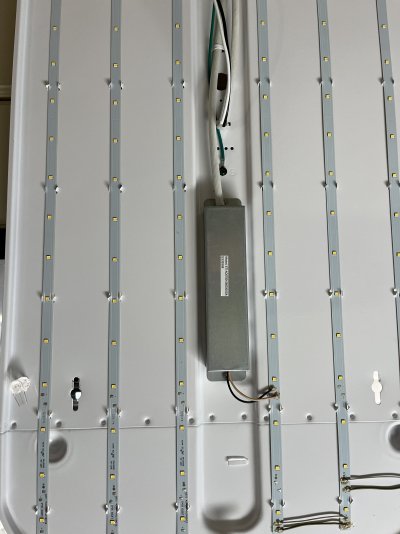In 2019 we remodeled our kitchen and replaced our kitchen light. It went in the same spot on the ceiling and we used the same wiring, original to the house, built in 1955.
The new light is LED, 3 strips on each side, each side fed by a transformer. A few months ago one side of 3 strips went out. Soon after the other side was taking a long time to turn on. Flip the wall switch and nothing happens and then a few minutes of blinking, then it would turn on.
The fixture has a 5 year warranty so I contacted the company (through Home Depot) and the unit was replaced under warranty.
A few days ago DH installed the new replacement fixture. Looked great....for a day. DH said something smelled in the kitchen and one side (3 strips of LEDs) of the newly installed fixture is dead. The other side of 3 LED strips is fine.
We are quite perturbed.
My first guess is that this fixture is just as bad as the first one. The company will not replace one that has already been replaced under warranty. Time to move on and just get a new fixture from a different brand.
Or.....could this be an issue with the house wiring? Could a problem with the wiring cause one side to go out and the blinking that we had in the original one?
This is the item -
https://www.homedepot.com/p/ETi-49-...ylic-Lens-Kitchen-Lighting-54645142/311997216
And this is what the LED panel looks like. This is one end, the other end has another transformer to go to the other side of 3 LED strips.
The new light is LED, 3 strips on each side, each side fed by a transformer. A few months ago one side of 3 strips went out. Soon after the other side was taking a long time to turn on. Flip the wall switch and nothing happens and then a few minutes of blinking, then it would turn on.
The fixture has a 5 year warranty so I contacted the company (through Home Depot) and the unit was replaced under warranty.
A few days ago DH installed the new replacement fixture. Looked great....for a day. DH said something smelled in the kitchen and one side (3 strips of LEDs) of the newly installed fixture is dead. The other side of 3 LED strips is fine.
We are quite perturbed.
My first guess is that this fixture is just as bad as the first one. The company will not replace one that has already been replaced under warranty. Time to move on and just get a new fixture from a different brand.
Or.....could this be an issue with the house wiring? Could a problem with the wiring cause one side to go out and the blinking that we had in the original one?
This is the item -
https://www.homedepot.com/p/ETi-49-...ylic-Lens-Kitchen-Lighting-54645142/311997216
And this is what the LED panel looks like. This is one end, the other end has another transformer to go to the other side of 3 LED strips.
Attachments
Last edited:

